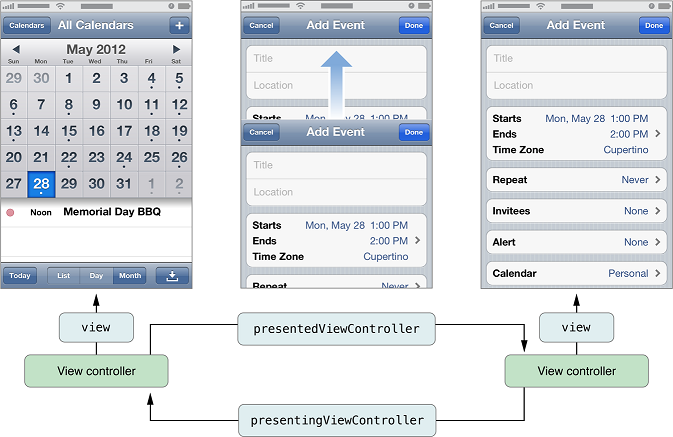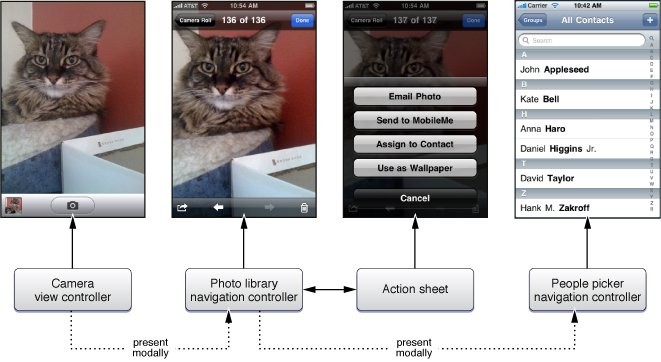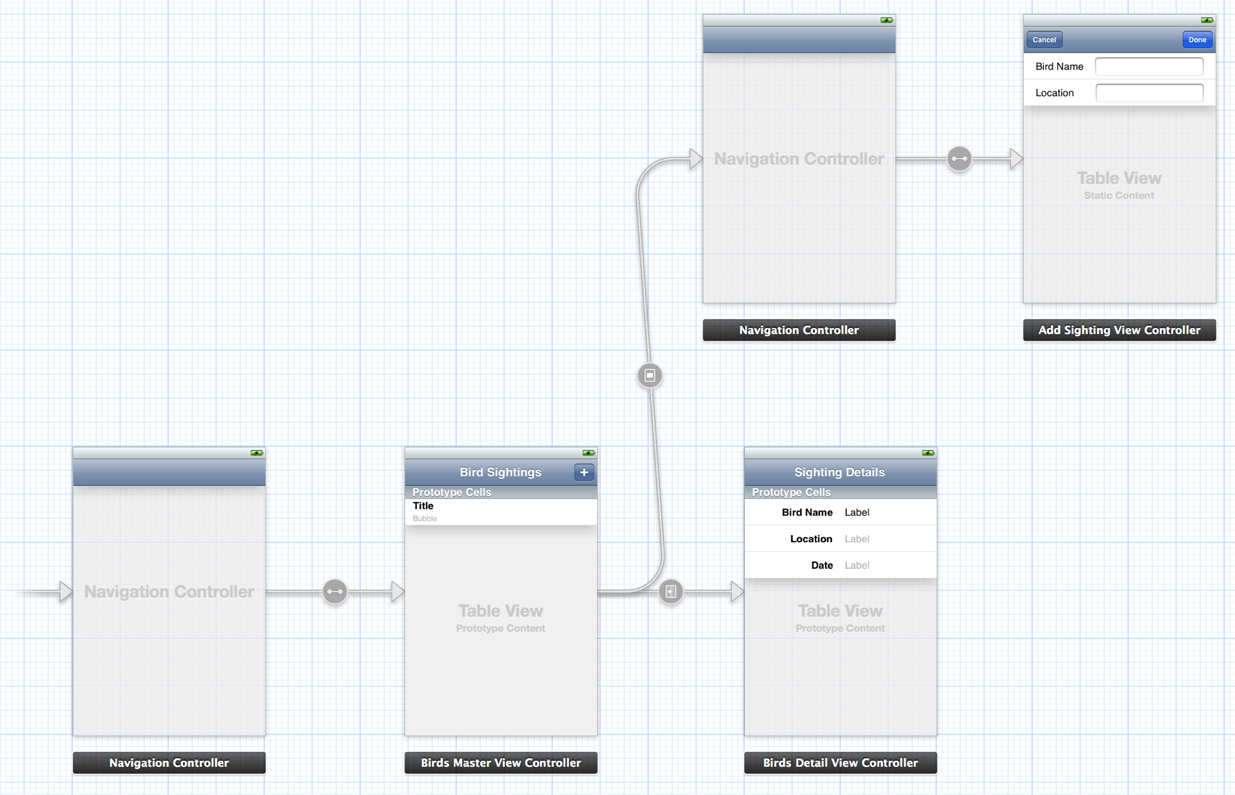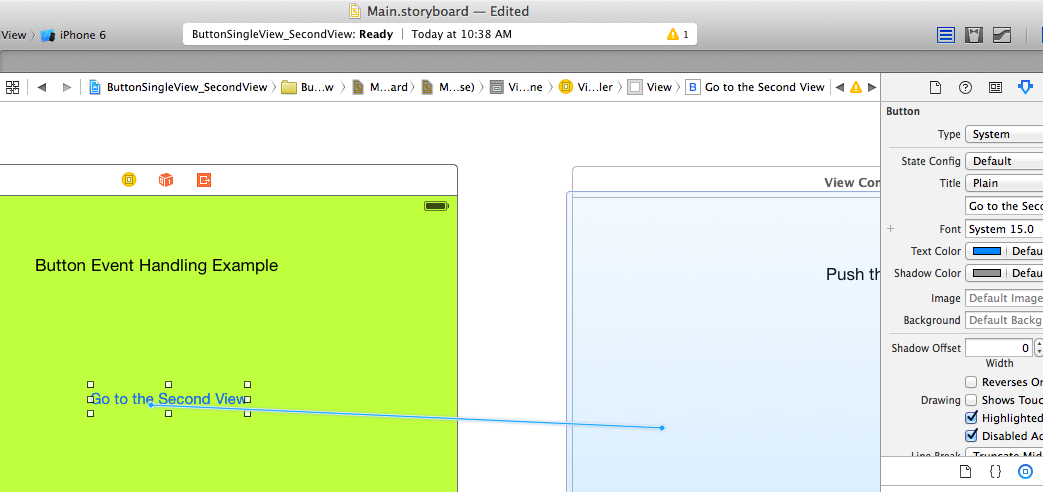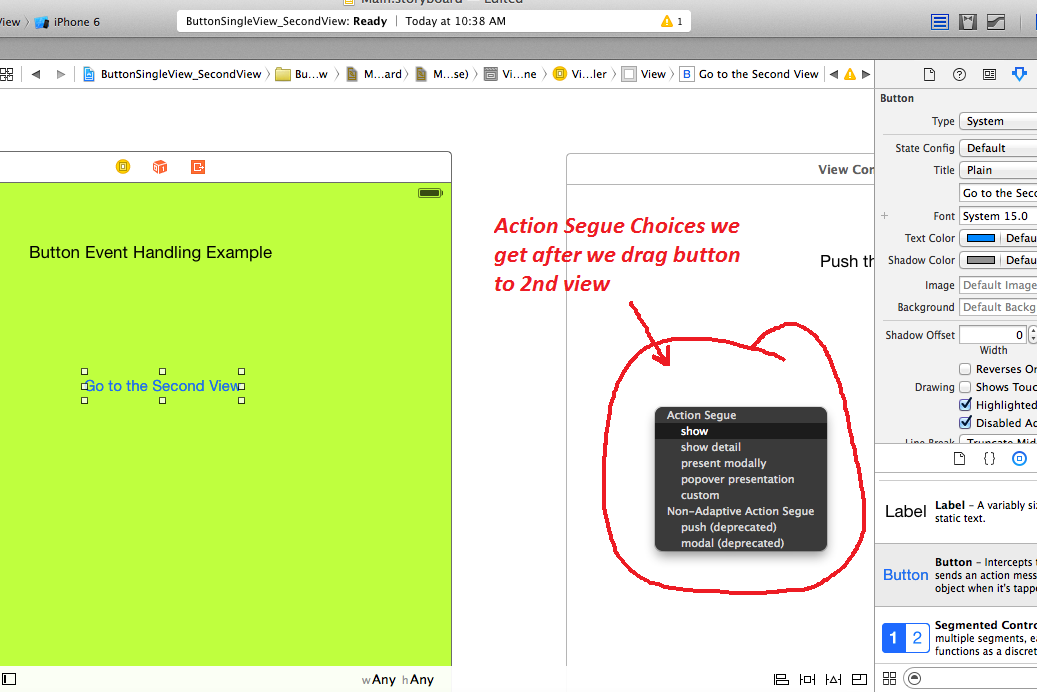CS4521: Mobile and Topics in Web Programming |
||||||
|
iOS Presenting and Dismissing View Controllers from Other ViewControllers
How you present different views to user. Can be triggered by user events or other occurrences (timing, etc).
General Idea: View Controller 1 -> presents -> View Controller 2
NOTE: A View (Interface) is associated with a View Controller.
A motivating Example: Image Application ->Sending Image->People Picker
Presenting a View Controller (and associated View) through iOS Segues
the concept of how one View can present another View in iOS
Can setup Graphically from StoryBoard Interface Editor:
>>here is example with multiple ViewControllers which are connected through iOS Segues which present other
View Controllers
What is an iOS Segue
Segues Automatically Instantiate the Destination View Controller
represents a triggered transition that brings a new view controller into your app’s user interface.
iOS Segue Contains
object caused the segue to be triggered, known as the sender
Source view controller that starts the segue
Destination view controller to be instantiated
Kind of transition that should be used to bring the destination view controller onscreen
Optional identifier string that identifies that specific segue in the storyboard
HOW TO create iOS Segue Graphically
In StoryBoard Builder ---Drag from Widget in View 1 that triggers "showing" View 2 to View 2
iOS Segue Type: Now you get a choice of HOW to show the 2nd View
How to creagte iOS Segue in Program/Code
In the Source ViewController add the code here to present 2nd View Controller (the class is called SecondViewController)
Instantiating another view controller inside the same storyboard
NOTE: the method below can be triggered as event handling code on a widget or simply whenever you want to call it in your code.
- (IBAction)presentSpecialViewController:(id)sender {SecondViewController *svc = [storyboard instantiateViewControllerWithIdentifier:@"SecondViewController"];[self presentViewController:svc animated:YES completion:nil];
Type of iOS Segues
iOS Segues
Name
Interface Builder Symbol
Description
Show
Present the content in the detail or master area depending on the content of the screen. If the app is displaying a master and detail view, the content is pushed onto the detail area. If the app is only displaying the master or the detail, the content is pushed on top of the current view controller stack.
Show Detail
Present the content in the detail area. If the app is displaying a master and detail view, the new content replaces the current detail. If the app is only displaying the master or the detail, the content replaces the top of the current view controller stack.
Present Modally
Present the content modally. There are options to choose a presentation style (UIModalPresentationStyle) and a transition style (UIModalTransitionStyle).
Present as Popover
Present the content as a popover anchored to an existing view. There is an option to specify the possible directions of the arrow shown on one edge of the popover view (UIPopoverArrowDirection). There is also an option to specify the anchor view.
Custom
A custom segue enabling you to write your own behaviors.
Push (Deprecated)
Present the content by pushing it onto the current stack of view controllers.
Modal (Deprecated)
Present the content modally on top of the existing screen. The options are the same as Present Modally.
Popover (Deprecated)
Present the content as a popover. The options are the same as Present as Popover.
Replace (Deprecated)
Replace the top view controller on the screen with the new content.
Dismissing a Presented View Controller
You dissmiss a ViewController object through the statement
[ViewControllerObject dismissViewControllerAnimated:YES completion: nil];
SEE developer.apple.com for the Concept of Delegates:
When it comes time to dismiss a presented view controller, the preferred approach is to let the presenting view controller dismiss it. In other words, whenever possible, the same view controller that presented the view controller should also take responsibility for dismissing it. Although there are several techniques for notifying the presenting view controller that its presented view controller should be dismissed, the preferred technique is delegation. For more information, see Using Delegation to Communicate with Other Controllers.
